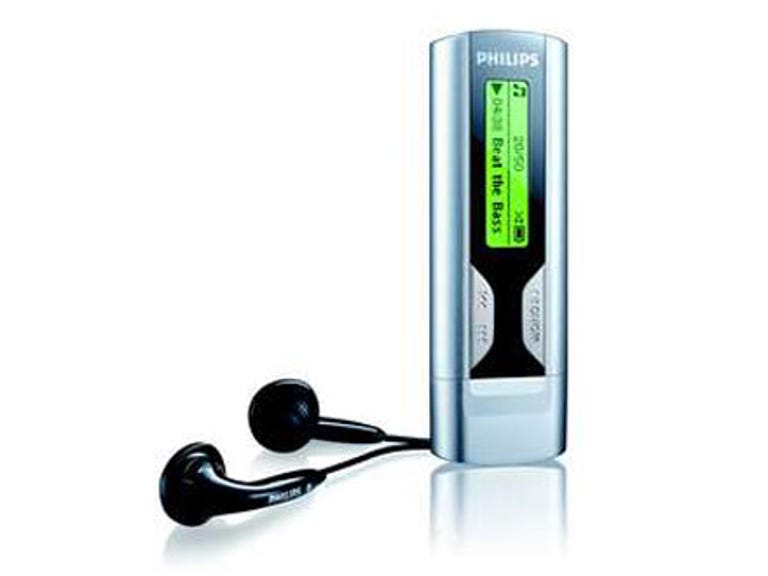 Why You Can Trust CNET
Why You Can Trust CNET Philips GoGear SA1100 (512MB) review: Philips GoGear SA1100 (512MB)
It's cheap and simple, but doesn't pretend to be anything else. The SA1100 could be an option for you if you're not fussed about features beyond song playback and voice recording.
Design
The GoGear SA1100 is a 30 gram triangular prism with a backlit monochrome LCD display on one side, and an AAA-battery cover comprising the other two sides. It plugs directly into your PC, just like a USB memory stick or iPod Shuffle. The shape of the player is such that it is likely to obscure the neighbouring port, but there is a USB extension cable included to address this issue.
The Good
The Bad
The Bottom Line
The LCD is small, with a resolution of 32x128 pixels, but it is also relatively easy to read.
One annoying thing about the SA1100's design is the fact that most buttons perform multiple functions, depending on how long you press them for. Also, each button is divided in two, so that pressing one on the left side does something different from pressing it on the right. This button multitasking results in the occasional erroneous key press, which can become tedious.
The inclusion of a lock key will be appreciated by hardcore exercisers and people who tend to carry their MP3 players in a backpack full of shifting contents.
Features
The player comes with a CD which features a firmware manager, user manual and drivers for those poor souls still using Windows ME or 98. There is no software suite; files are transferred via drag-and-drop in Windows Explorer. Many will find this simple interface refreshing, but new users might be surprised by the lack of guidance.
The drag-and-drop factor makes it easy to use the player as a USB mass storage device. The SA1100 shows up as an external drive in Windows, and you simply move the required files to the drive.
For those who like the element of surprise, songs can be set to play in shuffle mode. There is also the option to repeat individual tracks or the whole list of songs. Four equaliser settings optimise the listening experience for classical, jazz, pop or rock tunes.
Compatible audio formats are MP3, WMA and WAV. The SA1100 also features a voice recorder that creates files in WAV format. Unlike many of its flash-based competitors, the player does not have an FM radio.
Performance
Audio quality was on par with higher priced models such as the Toshiba gigabeat flash, but changing the equaliser settings made little difference to the depth of sound.
As with the Zen Nano Plus, there's no option to create playlists or sort songs. Those who blanch at the thought of having their music organised alphabetically rather than by artist or genre do have some options, though. The SA1100 has a folder browsing function, which allows you to create artist folders (but no subfolders) on your PC, then transfer them to the player. Holding down the skip button scrolls through the folders, so you can then browse by artist.
Voice recordings sounded surprisingly clear, but background hiss tended to kick in when the player was held a metre or more away from the sound source. The fact that you can only delete recordings by plugging the player into a PC and trashing the files in Windows will not please those who want to do a lot of on-the-run recording. Given this and the fact that recording in WAV format claims a lot of memory, the player is best suited to those who will make infrequent use of the record function.
Battery life was not quite as good as your average flash-based player, but the lower number of hours (around six in our testing) must be weighed up against the convenience of being able to chuck another AAA battery in when the first one peters out. Players with rechargeable batteries such as Toshiba's gigabeat flash must be charged via USB in order to regain full power; a potential inconvenience if you're out and about.
The SA1100 is a basic player, but that in itself isn't a bad thing. It is a device full of trade-offs though: for example, the AAA battery is instantly replaceable, but has fewer hours in it and requires a bulkier player. However, for the low price, it's not a bad choice.


